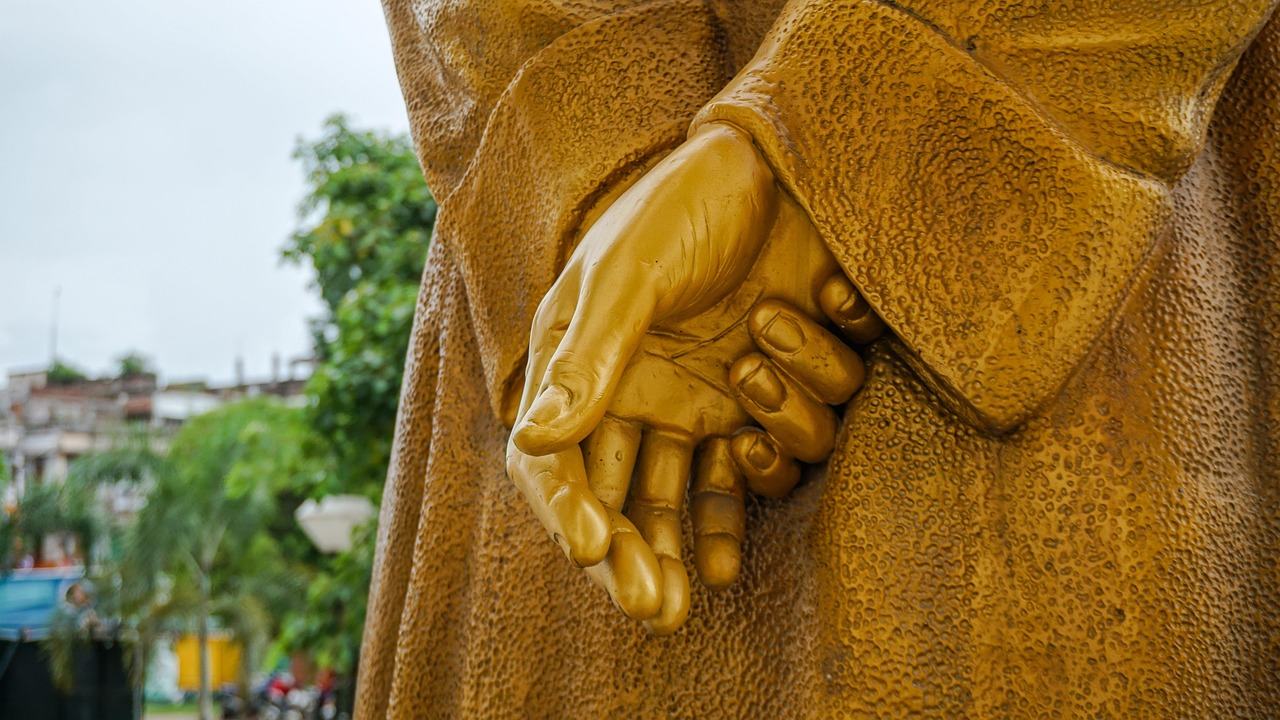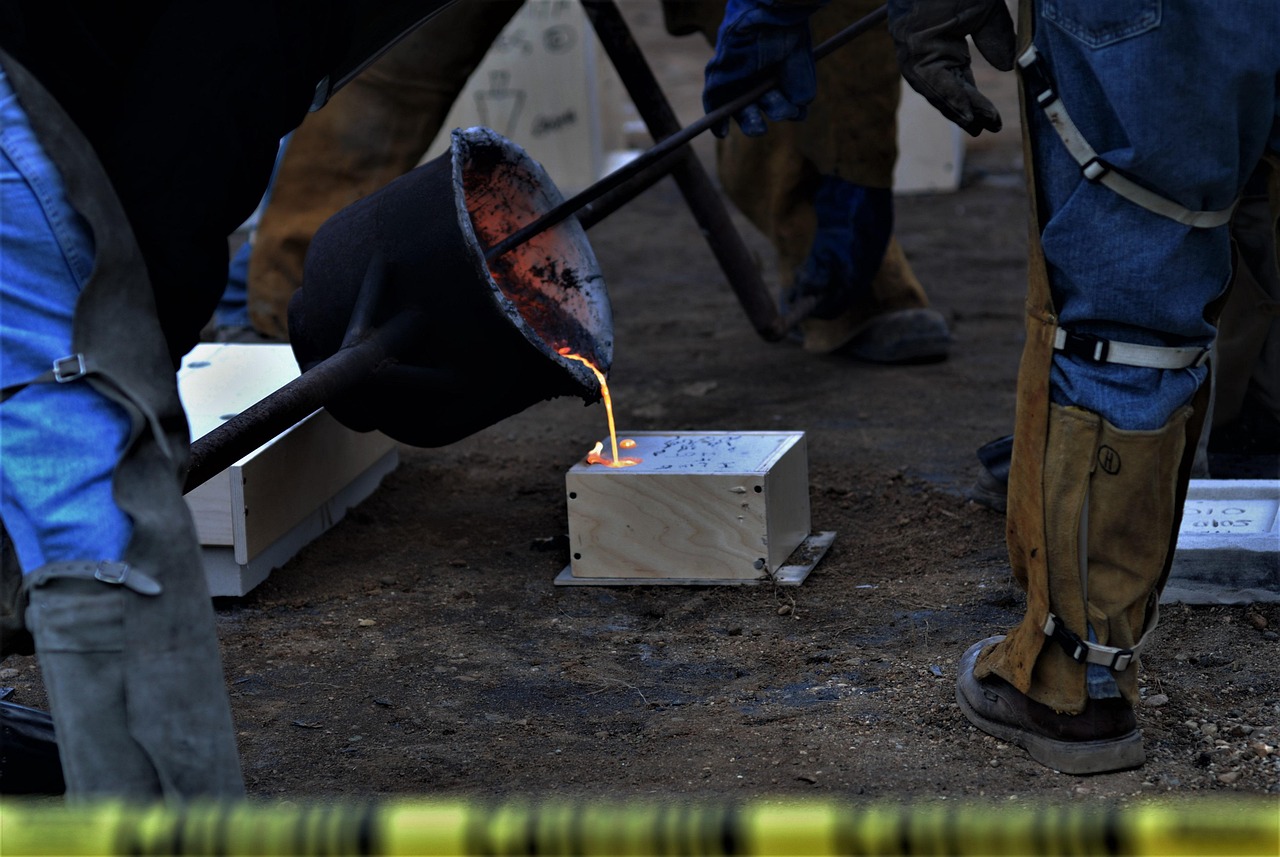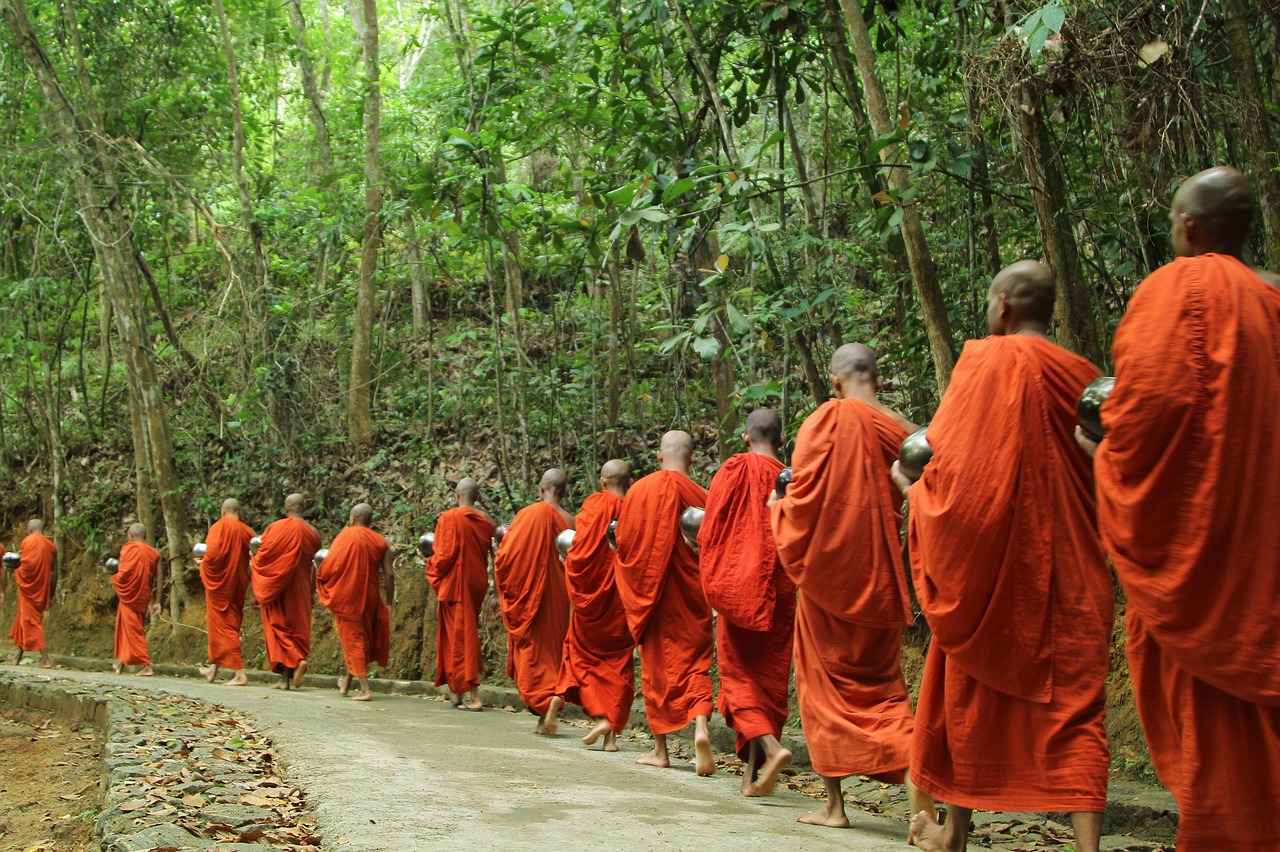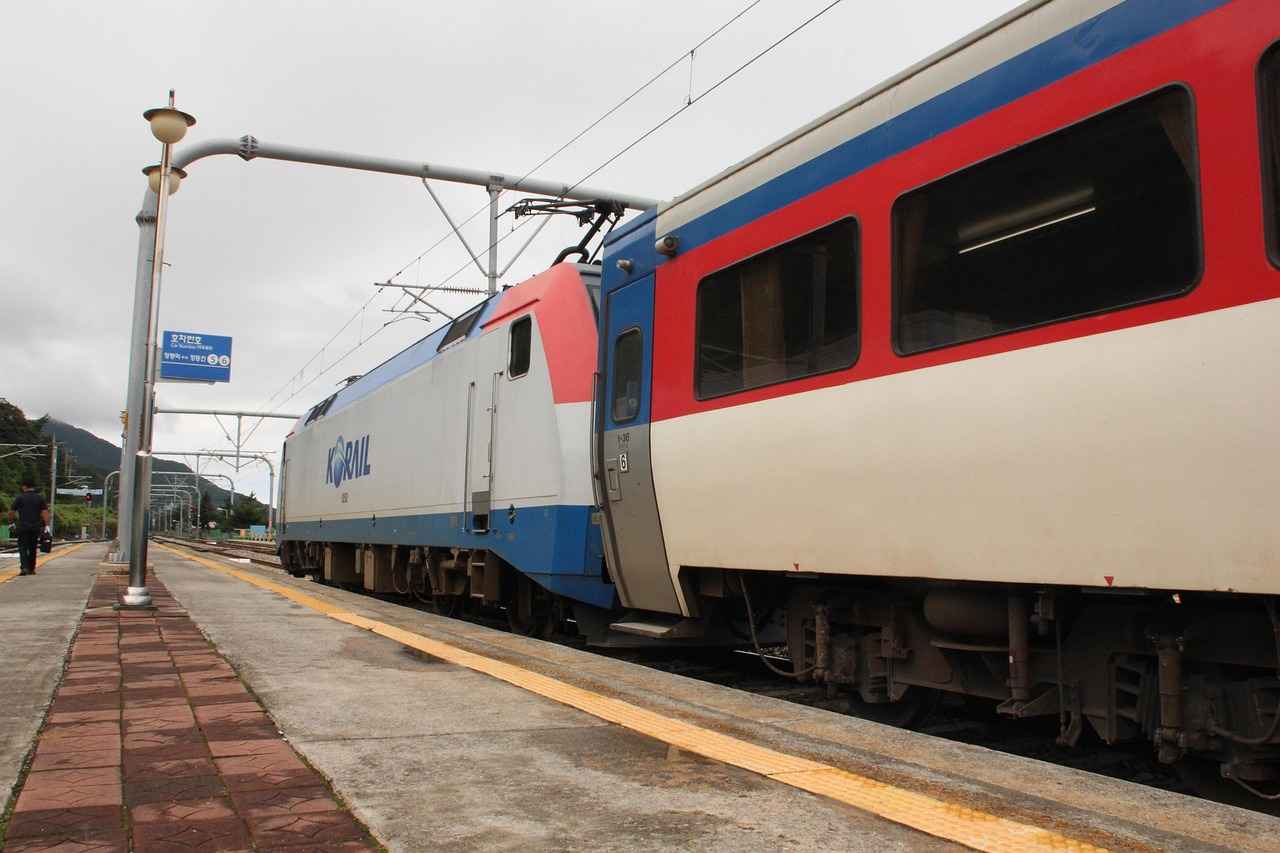West Bengal Joint Entrance Counselling (WBJEE) is an essential process for students aspiring to secure admission in various engineering and pharmacy colleges across West Bengal. This article aims to provide a comprehensive overview of WBJEE, including eligibility criteria, the application process, and the counselling steps, ensuring that students are well-informed and prepared for their academic journey.
What is WBJEE?
The West Bengal Joint Entrance Examination (WBJEE) is a state-level entrance test designed for students seeking admission into undergraduate programs in engineering and pharmacy colleges within West Bengal. The examination assesses candidates’ knowledge and understanding of subjects like Physics, Chemistry, and Mathematics.
Eligibility Criteria for WBJEE
Understanding the eligibility requirements is crucial for prospective candidates. Below are the main components:
- Academic Qualifications: Candidates must have completed their 10+2 education with a focus on specific subjects.
- Age Limit: There are certain age restrictions that applicants must meet to qualify for WBJEE.
Application Process for WBJEE
The application process is a vital step for candidates. Here’s a breakdown of the key steps:
- Steps to Apply: Registration, filling out the application form, and payment of the application fee are essential steps.
- Important Dates: Keeping track of important dates such as application opening and closing dates is crucial for timely submissions.
WBJEE Exam Pattern
Familiarity with the exam pattern can enhance preparation. The WBJEE consists of:
- Types of Questions: The exam primarily includes multiple-choice questions.
- Marking Scheme: Understanding the marking scheme, including negative marking, is crucial for strategic preparation.
WBJEE Counselling Process
The counselling process is a critical phase for candidates post-examination. Key steps include:
- Registration for Counselling: Candidates must register for counselling after results are announced.
- Choice Filling: Selecting the right colleges and courses based on preferences and rankings is essential.
Document Verification
This mandatory step ensures that all candidates meet the required criteria. Essential documents include:
- Required Documents: Candidates must prepare specific documents for verification.
- Verification Process: Understanding the step-by-step procedure for document verification can alleviate stress.
Seat Allotment Process
This process determines college placements based on merit and preferences:
- Merit List and Allotment: A merit list is published post-counselling, influencing seat allocation.
- Reporting to Allotted Colleges: After seat allotment, students must report to their respective colleges to complete the admission process.
Conclusion
In conclusion, understanding the WBJEE and its counselling process is vital for aspiring students. This guide aims to empower students with all the necessary information for a successful admission journey.

What is WBJEE?
West Bengal Joint Entrance Examination (WBJEE) is a crucial state-level entrance test that serves as a gateway for students aspiring to gain admission to various engineering and pharmacy colleges in the vibrant state of West Bengal. This examination not only assesses the knowledge and skills of prospective candidates but also plays a significant role in shaping their academic and professional futures.
The WBJEE is conducted annually, and it attracts a large number of candidates from across the state. The examination is designed to evaluate the understanding of candidates in subjects such as Physics, Chemistry, and Mathematics, which are fundamental for pursuing engineering and pharmacy courses. The test format typically consists of multiple-choice questions, allowing students to demonstrate their proficiency in these critical areas.
One of the primary objectives of WBJEE is to ensure that only the most qualified candidates are admitted into the engineering and pharmacy programs. This not only maintains the quality of education but also ensures that students are well-prepared to meet the challenges of their respective fields. The examination is known for its rigorous standards and comprehensive evaluation methods.
In addition to the examination itself, the WBJEE process includes a detailed counselling procedure that helps students secure their desired college and course. This process involves multiple steps, including registration, choice filling, and document verification, which are critical for a successful admission experience.
Overall, the WBJEE serves as a vital stepping stone for students in West Bengal seeking to pursue higher education in engineering and pharmacy. Understanding the nuances of this examination and its associated processes is essential for candidates aiming for success in their academic endeavors.

Eligibility Criteria for WBJEE
Understanding the eligibility requirements is essential for prospective candidates aiming to secure a place in the West Bengal Joint Entrance Examination (WBJEE). This section elaborates on the necessary academic qualifications and age limits required to apply for the examination.
Academic Qualifications
To be eligible for WBJEE, candidates must have successfully completed their 10+2 education with a focus on specific subjects. The key subjects required are:
- Physics
- Chemistry
- Mathematics
It is important for students to not only complete these subjects but to also achieve a minimum aggregate percentage, typically around 45% for general candidates and 40% for reserved categories. This ensures that candidates have a solid foundation in the core subjects relevant to engineering and pharmacy courses.
Age Limit
In addition to academic qualifications, there are age restrictions for WBJEE applicants. Candidates must be at least 17 years old as of December 31 of the year of examination. There is no upper age limit for most courses, although some specific programs may impose additional age constraints.
Overall, meeting these eligibility criteria is crucial for candidates who wish to participate in WBJEE. By ensuring that they fulfill both the academic and age requirements, students can confidently proceed with their application and prepare for a successful examination experience.
Academic Qualifications
are a critical component for candidates aspiring to take the West Bengal Joint Entrance Examination (WBJEE). To ensure that applicants are adequately prepared for the challenges of higher education in engineering and pharmacy, specific educational criteria must be met.
To be eligible for the WBJEE, candidates must have successfully completed their 10+2 education from a recognized board. The subjects studied during this period are particularly important, as they form the foundation for the knowledge required in the entrance examination.
| Required Subjects | Importance |
|---|---|
| Physics | Essential for understanding engineering principles and applications. |
| Chemistry | Critical for pharmacy aspirants and relevant for various engineering fields. |
| Mathematics | Fundamental for problem-solving and analytical skills in engineering. |
In addition to the subjects, candidates are generally required to achieve a minimum aggregate percentage in their 10+2 examinations. This percentage may vary based on the category of students:
- General Category: Typically requires a minimum of 45% aggregate marks.
- Reserved Categories: Often have a relaxed criterion, requiring around 40% aggregate marks.
It is crucial for candidates to ensure that they meet these before applying for the WBJEE, as failure to do so may result in disqualification from the examination process. Understanding these requirements not only aids in proper preparation but also enhances the chances of securing a seat in a coveted engineering or pharmacy college.
Subject Requirements
For students aspiring to take the West Bengal Joint Entrance Examination (WBJEE), it is essential to have a solid foundation in three core subjects: Physics, Chemistry, and Mathematics. Each of these subjects plays a critical role in shaping the knowledge and skills necessary for success in engineering and pharmacy courses.
- Physics: This subject is fundamental as it helps students understand the principles governing the physical world. Concepts such as mechanics, thermodynamics, and electromagnetism are not only crucial for the WBJEE exam but also form the basis for many engineering disciplines. A strong grasp of physics enables students to tackle real-world problems and innovate solutions.
- Chemistry: Chemistry is vital for students interested in pharmacy and certain engineering branches, such as chemical engineering. It equips students with knowledge about chemical reactions, molecular structures, and the properties of materials. Understanding chemistry is essential for practical applications in laboratories and industries, making it a key subject for WBJEE aspirants.
- Mathematics: Often referred to as the language of science, mathematics is indispensable for engineering students. From calculus to algebra, mathematical concepts are used extensively in solving engineering problems, analyzing data, and optimizing processes. A solid foundation in mathematics not only aids in WBJEE preparation but also enhances analytical and problem-solving skills.
In conclusion, students must focus on developing a strong understanding of Physics, Chemistry, and Mathematics during their higher secondary education. Mastery of these subjects will not only prepare them for the WBJEE but also for a successful career in their chosen fields.
Minimum Marks Criteria
are a crucial aspect of the eligibility requirements for the West Bengal Joint Entrance Examination (WBJEE). Understanding these criteria is essential for students aiming to secure admission into engineering and pharmacy programs in West Bengal.
Typically, the minimum aggregate percentage required varies based on the category of the student. Here’s a breakdown of the typical marks needed:
| Category | Minimum Aggregate Percentage |
|---|---|
| General | 45% |
| OBC-A/OBC-B | 40% |
| SC/ST | 40% |
| Physically Challenged | 40% |
It is important to note that these percentages are calculated based on the marks obtained in the qualifying examination, which is typically the 10+2 level. The subjects considered for this calculation include Physics, Chemistry, and Mathematics. Students should ensure that they meet these minimum requirements to be eligible for the examination.
Additionally, students should be aware that the competition is intense, and achieving the minimum marks may not be sufficient for securing a seat in their desired college or course. Therefore, it is advisable to aim for a higher percentage to increase the chances of admission.
In conclusion, understanding the is vital for all WBJEE aspirants. By knowing these requirements, students can better prepare themselves and strategize their study plans accordingly.
Age Limit
When considering the West Bengal Joint Entrance Examination (WBJEE), it is important for applicants to be aware of the age restrictions that may apply. These age criteria are set to ensure that candidates are of a suitable age to undertake the rigorous academic demands of engineering and pharmacy courses.
The general age limit for WBJEE applicants is as follows:
- Minimum Age: Candidates must be at least 17 years old as of December 31 of the year of admission.
- Maximum Age: The upper age limit for engineering candidates is typically set at 25 years, while for pharmacy candidates, it is 27 years.
However, there are certain exceptions to these age limits that prospective students should be aware of:
- Relaxation for Reserved Categories: Candidates belonging to reserved categories may receive age relaxation, which allows them to apply even if they exceed the maximum age limit.
- Special Cases: Some candidates with disabilities may also be granted exceptions, ensuring inclusivity in the admission process.
It is crucial for applicants to check the official WBJEE guidelines for the most accurate and updated information regarding age limits and any potential exceptions. This ensures that all candidates can plan their applications effectively and avoid any last-minute surprises.
In conclusion, understanding the age criteria for WBJEE is essential for all prospective candidates. Being aware of the minimum and maximum age limits, along with any applicable exceptions, allows students to navigate the application process with confidence.
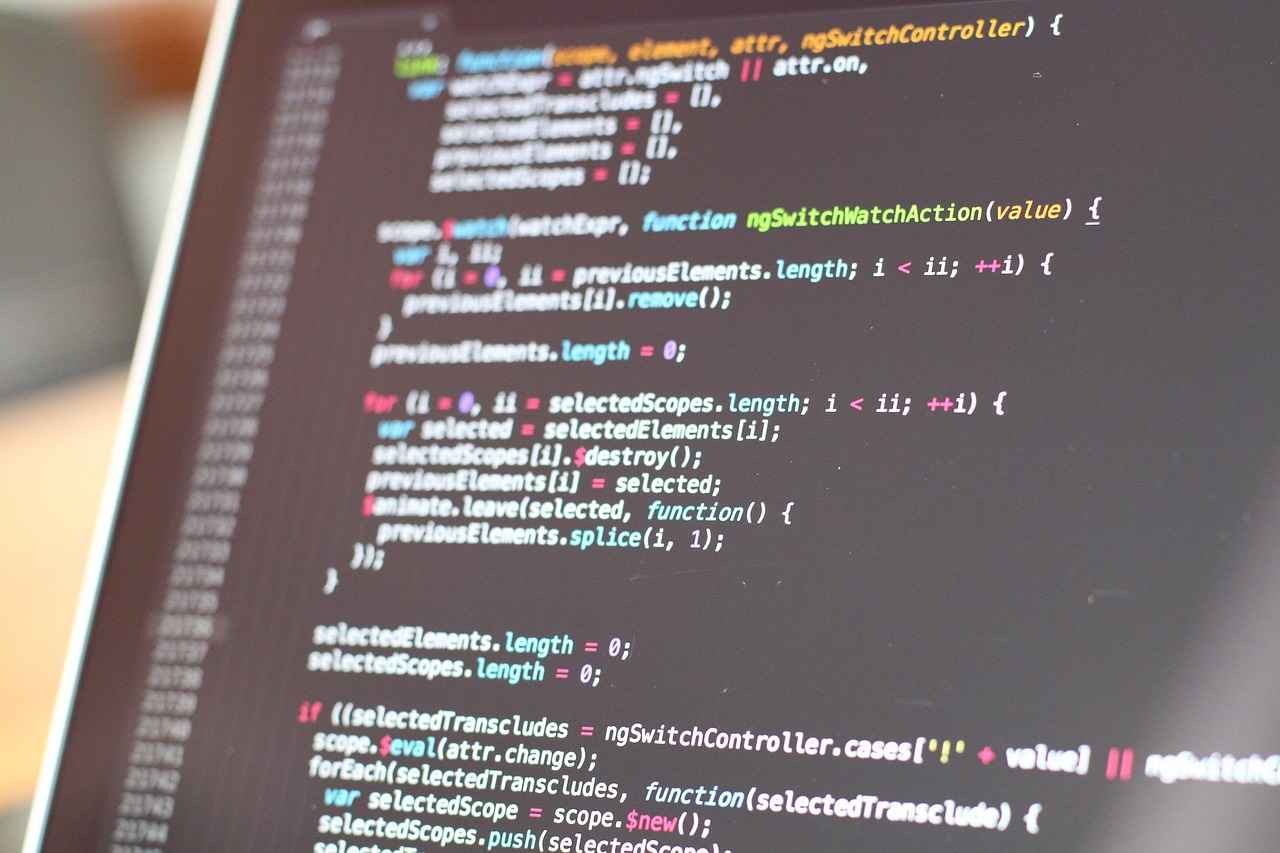
Application Process for WBJEE
The application process is a vital step for candidates aspiring to secure a place in the esteemed West Bengal Joint Entrance Examination (WBJEE). This section offers a detailed guide on how to navigate the application process successfully, ensuring that candidates are well-prepared and informed.
To begin with, the application process can be broken down into several key steps:
- Registration: Candidates must first register on the official WBJEE website. This involves providing basic information such as name, email ID, and mobile number. A unique registration ID will be generated for each candidate.
- Filling the Application Form: After registering, candidates need to fill out the application form with accurate details. This includes personal information, educational qualifications, and preferred examination centers.
- Uploading Documents: Essential documents, including photographs and signatures, must be uploaded in the specified format. It’s crucial to adhere to the guidelines regarding file size and dimensions.
- Payment of Application Fee: Candidates must pay the application fee through online payment methods. The fee structure varies based on the category of the candidate, so it is advisable to check the official guidelines.
- Submission: Once all details are filled in and documents uploaded, candidates should review their application thoroughly before submitting it. A confirmation will be sent to the registered email ID.
Important Dates: Keeping track of important dates is essential for a smooth application process. Candidates should note the opening and closing dates for applications, along with other significant timelines.
In conclusion, the application process for WBJEE requires careful attention to detail and adherence to guidelines. By following these steps, candidates can enhance their chances of a successful application and ultimately, a fruitful career in engineering or pharmacy.
Steps to Apply
for the West Bengal Joint Entrance Examination (WBJEE) are crucial for every aspiring candidate. The application process is designed to be straightforward, ensuring that students can easily navigate through each step. Below is a detailed breakdown of the application steps:
- Registration: The first step is to register on the official WBJEE website. Candidates need to provide basic information such as their name, date of birth, and contact details. It is essential to use a valid email address and phone number, as these will be used for further communication.
- Filling Out the Application Form: Once registered, candidates must fill out the application form. This includes entering personal details, educational qualifications, and selecting the preferred examination centers. It is important to double-check all information for accuracy, as any mistakes may lead to complications later in the process.
- Uploading Documents: Candidates are required to upload specific documents, including a recent passport-sized photograph, signature, and educational certificates. Each document must meet the specified size and format requirements, so candidates should prepare these in advance to avoid delays.
- Payment of Application Fee: After completing the application form and uploading the necessary documents, candidates must pay the application fee. Payment can typically be made through various methods such as credit/debit cards, net banking, or e-wallets. It is crucial to keep the payment receipt as proof of transaction.
- Final Submission: Once all steps are completed, candidates should review their application thoroughly before submitting it. A confirmation message will be sent to the registered email address upon successful submission, which candidates should keep for their records.
By following these steps meticulously, candidates can ensure a smooth application process for the WBJEE, paving the way for their future in engineering and pharmacy education.
Important Dates
play a crucial role in the application process for the West Bengal Joint Entrance Examination (WBJEE). Staying informed about these dates is essential for applicants to ensure they do not miss any significant milestones. Below is a comprehensive list of key dates that every prospective candidate should keep in mind.
| Event | Date |
|---|---|
| Application Opening Date | To Be Announced |
| Application Closing Date | To Be Announced |
| Admit Card Release Date | To Be Announced |
| WBJEE Exam Date | To Be Announced |
| Result Declaration Date | To Be Announced |
| Counselling Registration Start Date | To Be Announced |
| Counselling Registration End Date | To Be Announced |
| Seat Allotment Result Date | To Be Announced |
It is advisable for applicants to regularly check the official WBJEE website for updates regarding these dates, as they can significantly impact the application and admission process. Missing any of these deadlines could result in disqualification from the admission process, so a proactive approach is recommended.
In conclusion, keeping track of important dates is vital for all WBJEE applicants. By staying organized and informed, candidates can navigate the application process smoothly and increase their chances of securing a spot in their desired engineering or pharmacy programs.
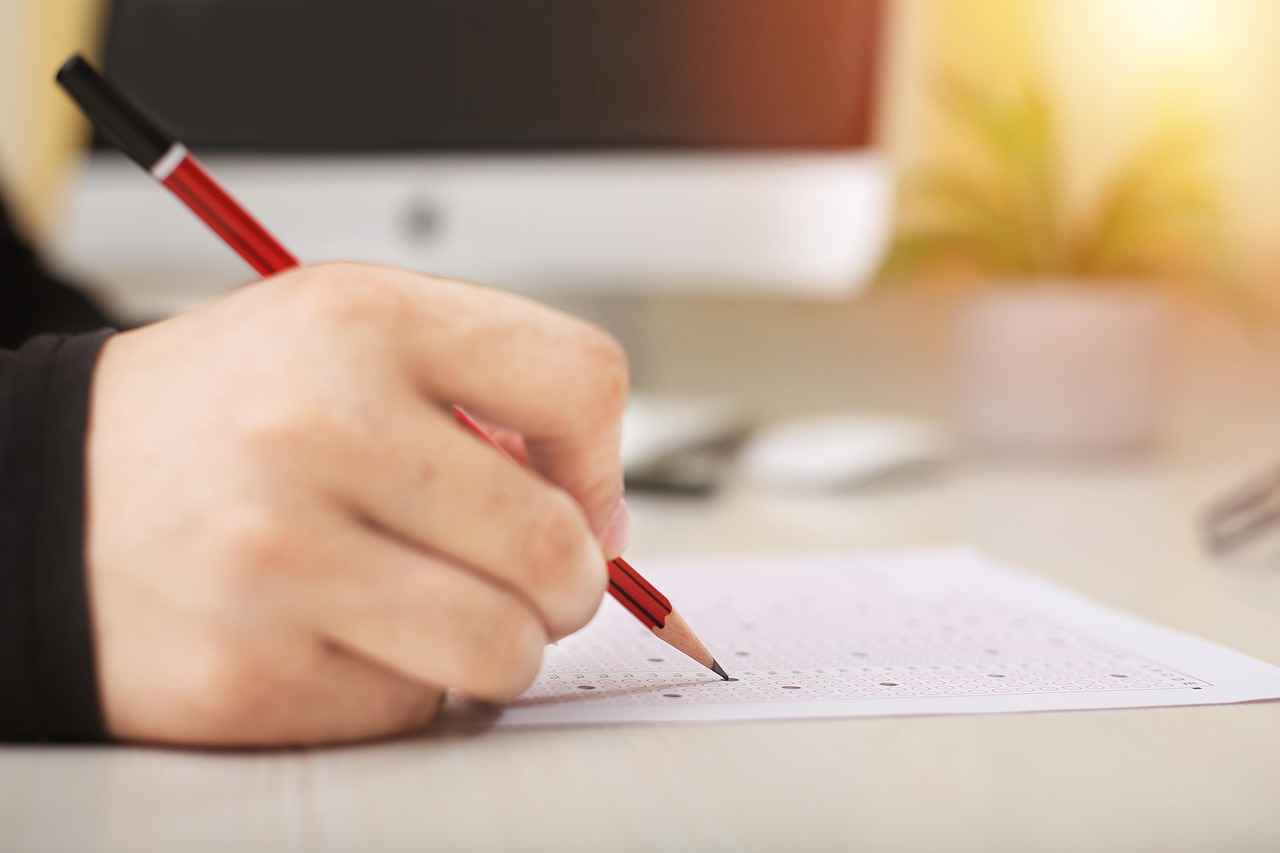
WBJEE Exam Pattern
Understanding the WBJEE Exam Pattern is essential for candidates aiming to excel in the examination. Familiarity with the exam structure can significantly enhance preparation and boost confidence on the test day.
The West Bengal Joint Entrance Examination (WBJEE) is a competitive test that assesses students’ knowledge in Physics, Chemistry, and Mathematics. This section will elaborate on the exam structure, types of questions, and the marking scheme, providing a comprehensive guide for aspirants.
| Exam Structure | Details |
|---|---|
| Duration | 4 hours (2 papers) |
| Number of Questions | Multiple-choice questions (MCQs) and numerical questions |
| Sections | Paper 1: Mathematics, Paper 2: Physics and Chemistry |
The exam consists of two papers:
- Paper 1: Focuses on Mathematics with a total of 75 questions.
- Paper 2: Comprises Physics and Chemistry, totaling 75 questions.
Types of Questions: The WBJEE features a mix of MCQs, where candidates select the correct answer from given options, and numerical problems that require calculations. This variety tests not only theoretical knowledge but also practical application skills.
Marking Scheme: Understanding the marking scheme is crucial for strategizing your approach. Each correct answer typically awards 1 mark, while incorrect answers may incur a penalty of 0.25 marks. Questions left unanswered do not attract any negative marking, encouraging students to attempt as many questions as possible.
In summary, a thorough understanding of the WBJEE exam pattern, including its structure, question types, and marking scheme, equips candidates with the tools needed for effective preparation. This knowledge allows students to develop a targeted study plan, ultimately enhancing their chances of success in the examination.
Types of Questions
Types of Questions in WBJEE
The West Bengal Joint Entrance Examination (WBJEE) is a critical gateway for students aspiring to secure admission in engineering and pharmacy colleges across West Bengal. One of the most significant aspects of this examination is the it encompasses, particularly the multiple-choice questions (MCQs). Understanding these question types is essential for developing an effective exam strategy.
Multiple-Choice Questions (MCQs)
- Each MCQ typically consists of a question followed by four answer choices.
- Students must select the correct option to earn marks.
- These questions assess not only knowledge but also the ability to apply concepts in practical scenarios.
Significance of MCQs in Exam Strategy
MCQs play a pivotal role in the WBJEE for several reasons:
- Time Management: Since each question is designed to be answered quickly, mastering MCQs can improve time efficiency during the exam.
- Conceptual Understanding: The format encourages students to grasp fundamental concepts rather than rote memorization.
- Negative Marking: Understanding the marking scheme is crucial; incorrect answers often incur penalties, making strategic guessing a vital skill.
Preparation Tips for MCQs
1. Practice with previous year question papers to familiarize yourself with the question format.2. Focus on understanding concepts rather than memorizing facts.3. Develop a strategy for tackling difficult questions, such as eliminating obviously wrong answers first.
In conclusion, mastering the types of questions in the WBJEE, particularly the multiple-choice questions, is essential for success. A well-rounded preparation strategy that includes understanding the question format, practicing effectively, and managing time wisely can significantly enhance a candidate’s performance.
Marking Scheme
Understanding the marking scheme of the West Bengal Joint Entrance Examination (WBJEE) is essential for students aiming to achieve their desired scores. This knowledge enables candidates to devise effective strategies for preparation and test-taking.
The marking scheme comprises several key components that dictate how points are awarded for each question:
- Correct Answers: For each correctly answered question, candidates are awarded 2 marks. This incentivizes students to focus on accuracy and understanding of the subjects.
- Incorrect Answers: A negative marking policy is in place; for every incorrect answer, 1 mark is deducted. This aspect encourages candidates to only answer questions they are confident about, minimizing guesswork.
- Unattempted Questions: Questions that are left unanswered do not incur any penalties or rewards, allowing students to strategize their approach without fear of losing marks.
It is crucial for candidates to familiarize themselves with this marking scheme to optimize their performance. Here are some practical tips:
1. Prioritize questions based on confidence level.2. Practice mock tests to gauge timing and accuracy.3. Avoid random guessing, especially on questions that are uncertain.4. Review the syllabus thoroughly to ensure comprehensive preparation.
In conclusion, a solid grasp of the marking scheme can significantly impact a student’s strategy during the WBJEE. By understanding how marks are awarded and the implications of negative marking, candidates can enhance their preparation and ultimately improve their chances of success in securing admission to their desired colleges.

WBJEE Counselling Process
The WBJEE Counselling Process is an essential step for candidates who have successfully completed the West Bengal Joint Entrance Examination. It is during this phase that students have the opportunity to secure their desired courses and colleges based on their exam performance. This section will provide a detailed overview of the steps involved in the WBJEE counselling process, ensuring candidates are well-prepared for each stage.
Step 1: Registration for Counselling
After the announcement of the WBJEE results, candidates must register for counselling on the official WBJEE website. This registration is crucial as it allows candidates to participate in the counselling process. During registration, candidates will need to provide their roll number, date of birth, and other personal details.
Step 2: Choice Filling
Once registered, candidates can proceed to fill their choices for colleges and courses. It is vital to select options based on personal preferences, future career goals, and the ranks achieved in the examination. Candidates are advised to research each institution and course thoroughly to make informed decisions.
Step 3: Document Verification
The next step involves document verification. Candidates must present specific documents, such as their WBJEE scorecard, class 10 and 12 mark sheets, and identity proof. This verification ensures that all submitted information is accurate and meets the eligibility criteria.
Step 4: Seat Allotment Process
After verification, the seat allotment process begins. Seats are allocated based on the merit list, which considers candidates’ ranks and their filled choices. Candidates will be informed about their allotted seats through the official website.
Step 5: Reporting to Allotted Colleges
Once seats are allotted, candidates must report to their respective colleges within the specified timeframe to complete the admission process. This includes paying the admission fees and submitting any remaining documents.
Conclusion
In summary, the WBJEE counselling process is a structured procedure that requires careful attention to detail. By following these steps diligently, candidates can enhance their chances of securing admission to their desired institutions.
Registration for Counselling
is a crucial step in the journey of candidates following the announcement of the West Bengal Joint Entrance Examination (WBJEE) results. This process not only facilitates the allocation of seats in various colleges but also ensures that students have the opportunity to pursue their desired courses. In this section, we will explore the registration process in detail and highlight its significance for aspiring students.
Once the WBJEE results are declared, candidates must promptly register for counselling to secure their place in the next phase of the admission process. The registration involves several steps:
- Visit the Official Website: Candidates should navigate to the official WBJEE counselling portal.
- Create an Account: New users must create an account by providing necessary details such as their roll number and date of birth.
- Complete the Registration Form: Fill in personal information, including contact details and educational qualifications.
- Pay the Registration Fee: A nominal fee is required to complete the registration process. Payment can typically be made online through various methods.
- Submit the Application: After ensuring all details are correct, candidates should submit their registration form.
The significance of this registration cannot be overstated. It serves as the gateway to the counselling process, allowing candidates to participate in the choice filling and seat allotment stages. Moreover, timely registration ensures that students do not miss out on their preferred colleges and courses due to delays or technical issues.
In conclusion, the registration for counselling is an essential step that candidates must undertake after the WBJEE results. By following the outlined steps diligently, students can enhance their chances of securing a seat in their desired institutions, paving the way for a successful academic career.
Choice Filling
Choosing the right colleges and courses can significantly influence a student’s academic and professional journey. This section aims to guide students through the process of effectively filling in their choices during the West Bengal Joint Entrance Counselling (WBJEE).
When it comes to , students should consider several factors to ensure they make informed decisions:
- Personal Interests: Reflect on your passions and interests. Selecting courses that resonate with your personal goals can lead to a more fulfilling educational experience.
- Career Aspirations: Research potential career paths associated with various courses. Understanding job prospects can help you prioritize your choices.
- College Reputation: Look into the reputation of the colleges you are considering. Established institutions often provide better resources, faculty, and placement opportunities.
- Course Curriculum: Review the syllabus of the courses you are interested in. Ensure that the curriculum aligns with your learning objectives and interests.
- Location: Consider the geographical location of the colleges. Proximity to home, living expenses, and local industry presence can all impact your college experience.
Once you have gathered all the necessary information, it’s time to rank your choices. Here’s a structured approach:
1. List all the colleges and courses you are interested in.2. Assign a score to each based on the factors mentioned above.3. Rank them from highest to lowest score.4. Fill in your choices accordingly during the counselling process.
It’s essential to be realistic about your rankings. While it’s good to aspire for top colleges, ensure that your choices also include institutions where you meet the eligibility criteria. This balanced approach can enhance your chances of securing a seat in a college that suits your needs.
In conclusion, effective choice filling based on preferences and thorough research can pave the way for a successful academic journey. Take your time, seek advice from mentors, and make choices that align with your future aspirations.

Document Verification
is an essential and mandatory step in the counselling process for the West Bengal Joint Entrance Examination (WBJEE). This crucial phase ensures that all candidates possess the necessary qualifications and documents to secure their admission into their chosen colleges. In this section, we will delve into the specific documents required and outline the verification process, which is vital for a smooth transition into the next stage of your academic journey.
To facilitate a seamless verification process, candidates must prepare a comprehensive set of documents. The following list outlines the essential documents needed:
- WBJEE Admit Card: This document serves as proof that you have appeared for the examination.
- Rank Card: Your rank card is crucial for the counselling process, indicating your performance in the exam.
- 10th and 12th Mark Sheets: These academic records validate your educational qualifications.
- Transfer Certificate (TC): A TC from your previous institution is necessary for admission.
- Category Certificate: If applicable, provide documentation to support your category claims (SC/ST/OBC).
- Identity Proof: A government-issued ID, such as an Aadhar card or passport, is required for verification.
Understanding the verification process can significantly reduce anxiety during this critical phase. Here’s a step-by-step guide to what you can expect:
1. Registration: Candidates must register for the counselling session online.2. Document Submission: Submit the required documents at the designated verification center.3. Verification: Officials will review and verify the authenticity of your documents.4. Confirmation: Once verified, you will receive a confirmation receipt, allowing you to proceed to the next steps of counselling.
It is imperative to ensure that all documents are accurate and readily available to avoid any delays in the counselling process. Being well-prepared will not only ease your stress but also enhance your chances of securing a seat in your desired college.
Required Documents
When participating in the West Bengal Joint Entrance Counselling (WBJEE), it is crucial for candidates to prepare a set of specific documents for verification. This process is essential to ensure a smooth and efficient counselling experience. Below is a detailed list of the mandatory documents that candidates must have ready:
- WBJEE Admit Card: This document is issued to candidates after they successfully register for the exam. It contains important details such as the examination center and timings.
- Rank Card: The rank card is generated post-examination and displays the candidate’s score and rank, which are vital for the counselling process.
- 10th and 12th Mark Sheets: Candidates must provide their mark sheets as proof of educational qualifications. These documents help verify eligibility and academic performance.
- Transfer Certificate (TC): A TC from the last attended institution is required to confirm that the candidate has completed their previous education.
- Caste Certificate: For candidates belonging to reserved categories, a caste certificate issued by a competent authority is necessary to avail of reservations during the admission process.
- Income Certificate: This document may be required for candidates seeking financial assistance or scholarships.
- Photographs: Recent passport-sized photographs are typically required for various forms and documents during the counselling process.
It is advisable for candidates to keep both originals and photocopies of these documents ready for submission during the verification process. Failing to provide the necessary documentation can lead to delays or disqualification from the counselling process.
Understanding the significance of each document and ensuring they are in order will facilitate a smoother verification process, allowing candidates to focus on their choices and future studies.
Verification Process
Understanding the Verification Process can significantly alleviate the stress associated with the counselling phase of the West Bengal Joint Entrance Examination (WBJEE). This section aims to provide a clear, step-by-step guide to the document verification process, ensuring that candidates are well-prepared and informed.
The verification process is crucial as it confirms the authenticity of the documents submitted by candidates. Here’s a detailed breakdown of the steps involved:
- Step 1: Document Preparation
Before attending the verification session, candidates must gather all necessary documents. These typically include: - WBJEE Rank Card
- Class 10 Mark Sheet
- Class 12 Mark Sheet
- Admit Card
- Category Certificate (if applicable)
- Passport-sized Photographs
- Step 2: Reporting to the Verification Center
Candidates should report to the designated verification center on the scheduled date and time. It’s important to arrive early to avoid any last-minute issues. - Step 3: Document Submission
Upon arrival, candidates will be required to submit their documents to the verification staff. Ensure that all documents are in order and readily accessible. - Step 4: Verification Process
The verification staff will check the submitted documents against the original copies. It’s essential to have both photocopies and originals available. - Step 5: Confirmation of Verification
Once the documents have been verified, candidates will receive a confirmation slip. This slip is crucial for the next steps in the counselling process.
By following these steps, candidates can navigate the verification process with confidence. Proper preparation and understanding of the requirements will help reduce anxiety and streamline the counselling experience.

Seat Allotment Process
The seat allotment process is a crucial aspect of the West Bengal Joint Entrance Counselling (WBJEE), as it directly influences the college placements of aspiring students. This process is designed to ensure that seats in engineering and pharmacy colleges across West Bengal are allocated fairly and transparently.
During the seat allotment phase, candidates are assigned seats based on their merit and the preferences they have indicated during the counselling process. The merit list, which is compiled based on the scores obtained in the WBJEE examination, plays a significant role in determining the order in which candidates receive their college placements.
| Criteria | Description |
|---|---|
| Merit-Based Allocation | Seats are allocated primarily based on the candidates’ scores in the WBJEE exam. |
| Preference Order | Candidates must fill in their preferred colleges and courses, which are considered during seat allocation. |
| Reservation Policies | Seats may be reserved for specific categories, such as SC, ST, and OBC. |
The process begins with candidates registering for counselling and subsequently filling out their choices. Once the choices are submitted, the system uses an algorithm to match candidates with available seats based on their merit and preferences. It is essential for students to carefully consider their options, as the order of preferences can significantly impact their final placement.
After the seat allotment results are published, candidates are required to report to their allotted colleges within a specified timeframe. This step is vital to confirm their admission and secure their seat. Students should prepare the necessary documents for verification to avoid any last-minute complications.
In summary, understanding the is essential for students participating in WBJEE counselling. By being aware of how seats are allocated, candidates can make informed decisions that enhance their chances of securing a place in their desired college.
Merit List and Allotment
Understanding the Merit List and Its Impact on Seat Allotment
The merit list is a critical document released after the counselling process in the West Bengal Joint Entrance Examination (WBJEE). This list plays a pivotal role in determining which candidates are allocated seats in various colleges based on their performance in the entrance exam. It is essential for students to grasp how the merit list operates and what implications it has for their future academic pursuits.
Once the counselling process concludes, the merit list is published, showcasing the ranks of all eligible candidates. The ranking system is primarily based on the scores obtained in the WBJEE exam, with higher scores resulting in better ranks. Candidates are then allotted seats in colleges according to their ranks and the choices they filled during the counselling process.
Factors Influencing Seat Allotment
- Rank in the Merit List: The higher the rank, the more options a student has for seat selection.
- Choice Preferences: Students must fill in their preferred colleges and courses during the counselling process, which significantly impacts their allotment.
- Category Reservations: Different categories (General, SC, ST, OBC) have specific reservation policies that can influence seat allocation.
Students can expect to receive notifications regarding their seat allotment status through the official WBJEE website. It is crucial for candidates to stay updated and follow the instructions provided for reporting to the allotted institution. This step is vital for securing their admission and ensuring a smooth transition into their chosen college.
In conclusion, the merit list is not just a list of names; it is a gateway to a student’s future. Understanding its significance and the factors that influence seat allotment can empower candidates to make informed decisions during the counselling process.
Reporting to Allotted Colleges
is a crucial step in the admission process after the seat allotment for the West Bengal Joint Entrance Examination (WBJEE). It is essential for students to understand the steps involved to ensure a smooth transition into their chosen college. Below, we outline the necessary actions to take following the seat allotment.
- Check Seat Allotment Results: After the allotment process, students should log into the official WBJEE counselling portal to view their seat allotment status. It is important to verify the details of the allotted college and course.
- Accept the Allotted Seat: Once students confirm their seat allotment, they must formally accept it. This often requires a payment of a nominal fee to secure the seat. Make sure to complete this step within the stipulated time frame.
- Document Preparation: Students must gather all necessary documents for reporting. This typically includes:
- WBJEE Rank Card
- Class 10 and 12 Mark Sheets
- Transfer Certificate
- Identity Proof
- Passport-sized Photographs
- Visit the Allotted College: Students should visit their allotted college on the specified reporting date. It is advisable to arrive early to avoid any last-minute issues.
- Complete Admission Formalities: On arrival, students will need to complete various admission formalities. This may include submitting documents, filling out admission forms, and paying the required fees.
- Attend Orientation Sessions: Many colleges conduct orientation programs for new students. Attending these sessions can provide valuable information about college life, academic expectations, and available resources.
Successful completion of these steps is vital for students to secure their place in their chosen college. By being organized and proactive, students can ensure a smooth transition into their academic journey.

Conclusion
In summary, gaining a thorough understanding of the West Bengal Joint Entrance Examination (WBJEE) and its accompanying counselling process is essential for students aiming to secure a spot in their desired engineering or pharmacy programs. The path to admission can often seem overwhelming, but with the right information and guidance, students can navigate it successfully.
This guide serves as a comprehensive resource, equipping aspiring candidates with crucial insights into each step of the admission journey. From the initial eligibility criteria to the final seat allotment, every aspect is covered to ensure that students are well-prepared. By familiarizing themselves with the application process, key dates, exam patterns, and the intricacies of the counselling procedure, candidates can enhance their chances of success.
The importance of strategic choice filling during the counselling phase cannot be overstated. Students must make informed decisions based on their preferences, rankings, and the available options to maximize their chances of admission into their preferred institutions. Furthermore, understanding the document verification process and having all necessary paperwork ready can significantly reduce stress during this crucial time.
Ultimately, the WBJEE journey is not just about passing an exam; it is about making informed choices that will shape a student’s future. By staying informed and proactive, candidates can navigate the complexities of the WBJEE and its counselling process with confidence.
As students embark on this important phase of their academic careers, this guide aims to empower them with the knowledge and tools necessary for a successful admission experience. With determination and the right information, aspiring engineers and pharmacists can look forward to a bright future in their chosen fields.
Frequently Asked Questions
- What is the eligibility criteria for WBJEE?
To be eligible for WBJEE, candidates must have completed their 10+2 education with Physics, Chemistry, and Mathematics. Additionally, they need to meet the minimum marks requirement, which varies by category.
- How do I apply for WBJEE?
The application process for WBJEE involves several steps: registering online, filling out the application form, and paying the application fee. Make sure to keep track of important dates to ensure your application is submitted on time!
- What is the exam pattern for WBJEE?
WBJEE consists of multiple-choice questions across Physics, Chemistry, and Mathematics. Familiarizing yourself with the exam pattern and marking scheme, including negative marking, can significantly boost your preparation strategy.
- What happens during the counselling process?
After the WBJEE results are declared, candidates must register for counselling. This includes filling out their preferred college and course choices, followed by document verification to secure their seat.
- How is the seat allotment done?
Seat allotment is based on the merit list created from the WBJEE scores and the preferences filled by candidates. Once seats are allotted, students must report to their respective colleges to finalize their admission.



